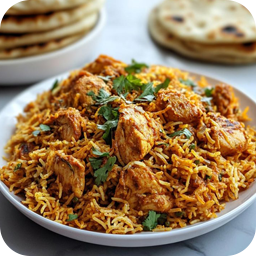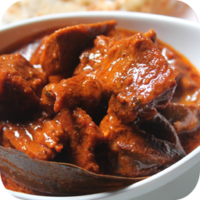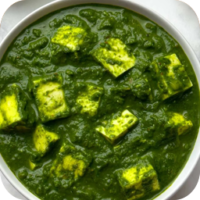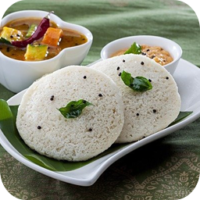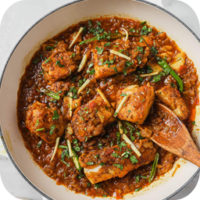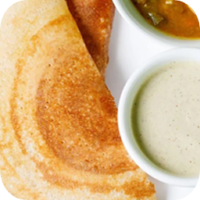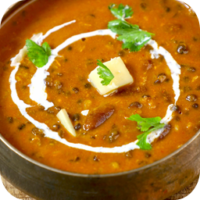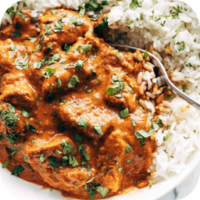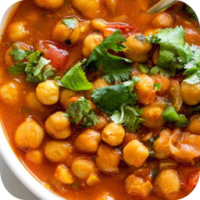Biryani is a famous and richly flavorful Indian dish made with basmati rice, meat (chicken, mutton, beef, or fish) or vegetables, and an array of spices. It is a layered and aromatic rice dish that is cooked using a special technique called “dum” cooking, where the ingredients are steamed together in a sealed pot to allow the flavors to meld perfectly.
Key Features of Biryani:
- Main Ingredients:
- Basmati Rice: Long-grain, aromatic rice is used for its fragrance and ability to remain fluffy.
- Protein: Common options include chicken, mutton (goat or lamb), beef, fish, shrimp, or a vegetarian version with paneer or mixed vegetables.
- Spices: A blend of spices such as turmeric, cardamom, cinnamon, cloves, bay leaves, nutmeg, and star anise creates a unique flavor.
- Yogurt & Herbs: Ingredients like curd (yogurt), mint, and coriander add freshness and creaminess.
- Fried Onions (Birista): Crispy fried onions are a key garnish and flavor enhancer.
- Preparation:
- Layering Technique: Biryani is traditionally prepared by layering parboiled rice and cooked meat or vegetables in a pot, along with fried onions, saffron-infused milk, and herbs.
- Dum Cooking: The pot is sealed with a lid (sometimes using dough) to trap steam, allowing the flavors to blend as the rice and meat cook together.
- The process ensures that the rice absorbs the essence of the spices, meat, and saffron.
- Types of Biryani:
- Hyderabadi Biryani: Known for its distinctive use of spices and yogurt-based marinades, this biryani can be either kacchi (raw meat cooked with rice) or pakki (pre-cooked meat and rice layered together).
- Lucknowi (Awadhi) Biryani: A milder, more aromatic version that uses fewer spices and relies on slow cooking.
- Kolkata Biryani: A subtle and fragrant variety that often includes potatoes and a hint of sweetness.
- Malabar Biryani: A coastal South Indian version featuring seafood like prawns or fish and a lighter flavor profile.
- Vegetarian Biryani: Made with vegetables like carrots, peas, beans, and sometimes paneer, it’s a popular option for vegetarians.
- Mughlai Biryani: Rich and royal, with a creamier and more luxurious taste.
- Serving:
- Biryani is usually served with accompaniments like:
- Raita: A yogurt-based side dish with cucumbers, onions, and spices.
- Salan: A tangy and spicy curry, often made with chilies or tamarind.
- Pickles and Papad: For added crunch and tanginess.
- Biryani is usually served with accompaniments like:
- Cultural Significance:
- Biryani is an integral part of Indian culinary heritage, often served at weddings, festivals, and celebrations.
- It is a symbol of communal harmony, blending diverse culinary influences from Persian, Mughal, and Indian cuisines.
- Every region in India has its unique style of biryani, reflecting local flavors and ingredients.
- Taste Profile:
- Biryani is known for its rich, aromatic, and complex flavors. The spices provide warmth and depth, while the rice is fluffy and infused with the essence of saffron or rose water. The protein or vegetables add heartiness, creating a satisfying and layered taste experience.
Summary:
Biryani is a celebrated Indian rice dish that combines fragrant basmati rice, spices, and a choice of meat or vegetables. It is cooked with a layered technique that ensures each bite is flavorful and aromatic. Biryani’s regional variations and versatility make it one of India’s most iconic and beloved dishes.

